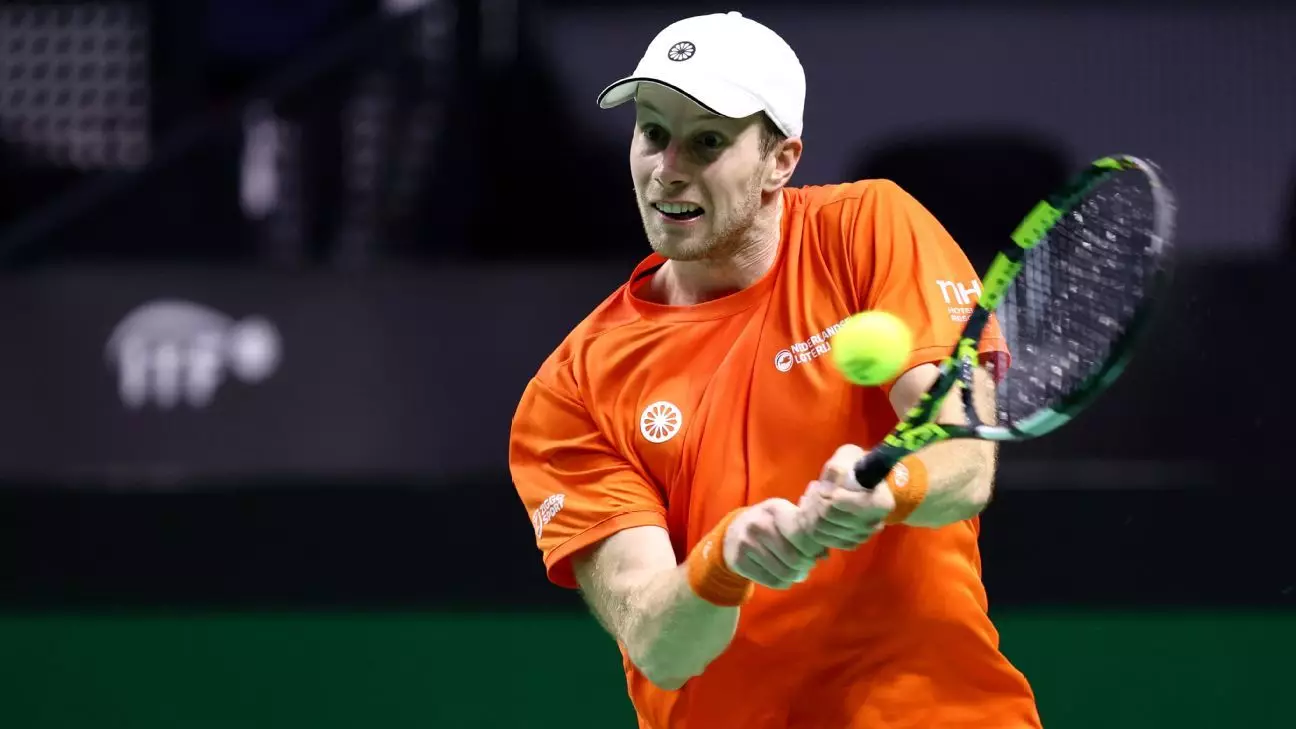In a riveting display of skill and determination, the Dutch tennis team achieved a monumental milestone by reaching its first Davis Cup final, thanks to the standout performances of Botic van de Zandschulp and Tallon Griekspoor. Their recent semifinal clash against Germany in Malaga, Spain, not only exhibited the potential of Dutch tennis but also highlighted the emotional and competitive spirit that resonates throughout the tournament.
Botic van de Zandschulp, ranked 80th in the world, became an unexpected hero by not only outplaying his opponent Daniel Altmaier but also by having the unique distinction of being the last player to defeat tennis legend Rafael Nadal in a professional match. This significant achievement granted him a psychological edge going into the semifinal, as he harnessed both the confidence gained from his previous victories and the unyielding support of his team.
Tallon Griekspoor further underscored the Netherlands‘ tenacity by securing a crucial victory over Jan-Lennard Struff, thus sealing the Netherlands’ position in the finals with a 2-0 sweep. With an impressive display of 25 aces, Griekspoor showcased not just his individual prowess, but a collective effort that speaks volumes about the synergy within the Dutch team.
„The last few years we’ve been talking about this,“ Griekspoor remarked post-match. His statement reflects a deeper journey that the team has embarked upon, rooted in years of hard work, dedication, and belief in their collective capabilities. Amidst the absence of high-ranking star players, Dutch captain Paul Haarhuis emphasized the significance of teamwork, stating, „We don’t have that top-five player… But it’s a team effort.“ His words resonate as a reminder that success does not always stem from individual glory but can instead flourish through a unified approach.
In the opening match against Altmaier, the game took a dramatic turn as Van de Zandschulp initially seemed to be on a comfortable path, poised to capitalize on a lead. However, Altmaier’s comeback demonstrated the unpredictable nature of tennis, as he engaged with the crowd while fighting back valiantly. The second set was especially critical, characterized by tension and a fierce battle of wills, where Van de Zandschulp found himself needing to summon every ounce of his resolve.
Despite facing multiple match points, Van de Zandschulp’s experience—gained from battling Nadal just days prior—proved advantageous. “At some point, I didn’t know what to do anymore,” he admitted, illustrating the mental strain athletes endure when pushed to their limits. Such experiences encapsulate the struggle and sophistication inherent in professional sports, where every moment can shift the tide of the match.
The absence of Rafael Nadal in the tournament had cast a certain pall over the event, as tennis fans had anticipated a thrilling performance from the 38-year-old champion. With his announcement to retire following the Davis Cup, the crowd was devoid of the electric energy typically associated with Nadal’s presence. The visualization of empty seats surrounding the court served as a poignant reminder of the legend’s impending departure from the sport and the emotional weight it carried for both fans and players.
However, the unexpected success of the Dutch players allowed for a shift in focus, redirecting attention to the younger talents who are stepping into the limelight. As they move ahead to the final against yet another formidable opponent, the excitement surrounding Dutch tennis is palpable, showcasing a future that, although uncertain, is rich with potential.
As the Netherlands prepares to face off against either Italy or Australia in the finals, this moment is not simply a triumph; it is a testament to the evolution of Dutch tennis. With the backdrop of both personal and national pride, players like van de Zandschulp and Griekspoor embody the hope and dedication that define this new era. The stage is set for not just a match, but a celebration of resilience and an opportunity for these athletes to carve their names into the annals of tennis history.


Napsat komentář